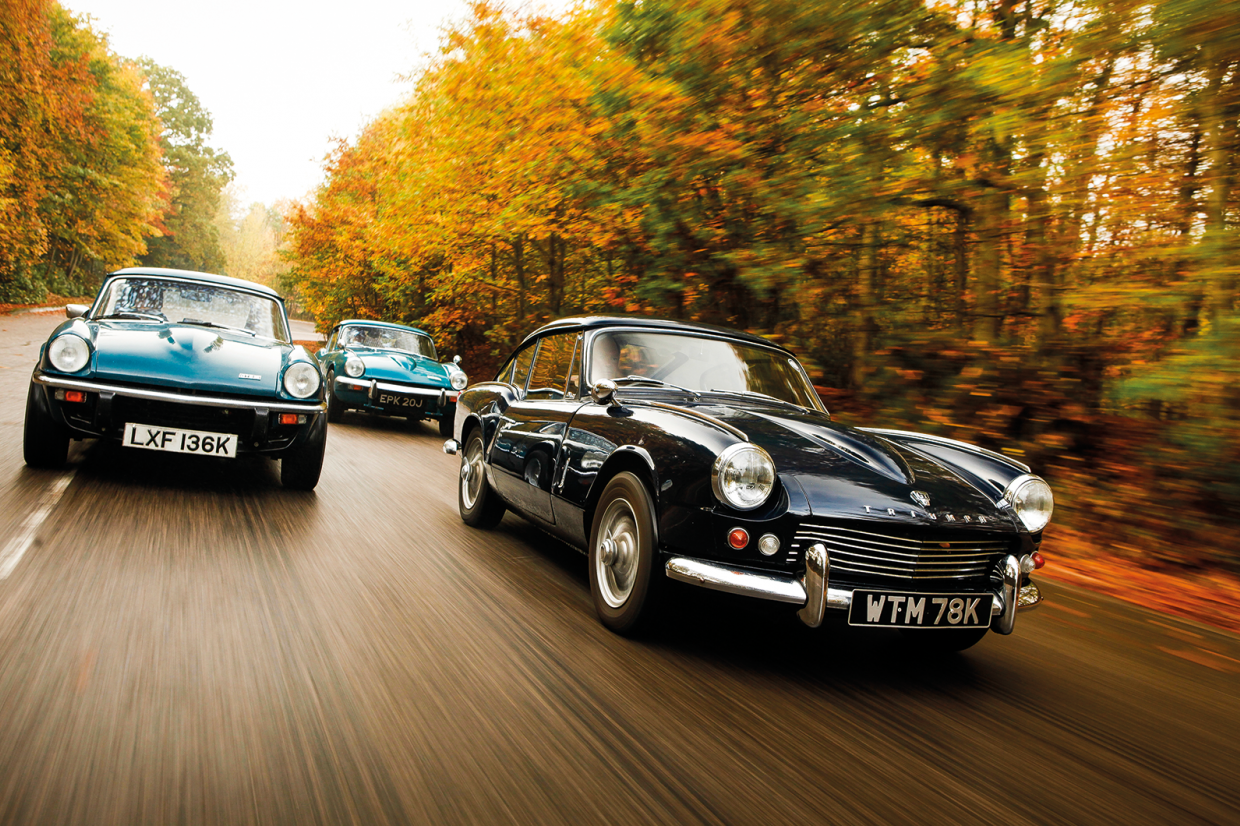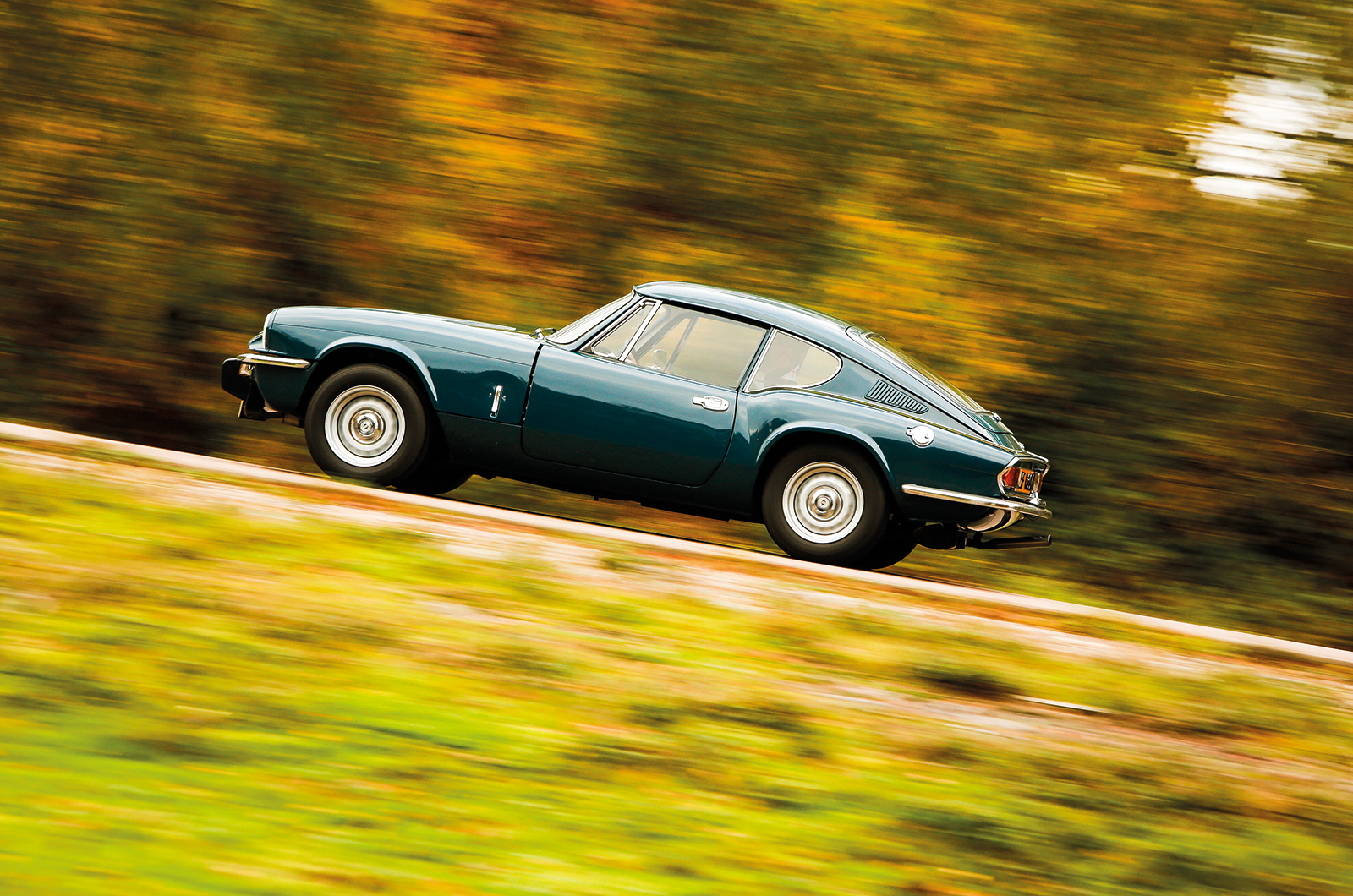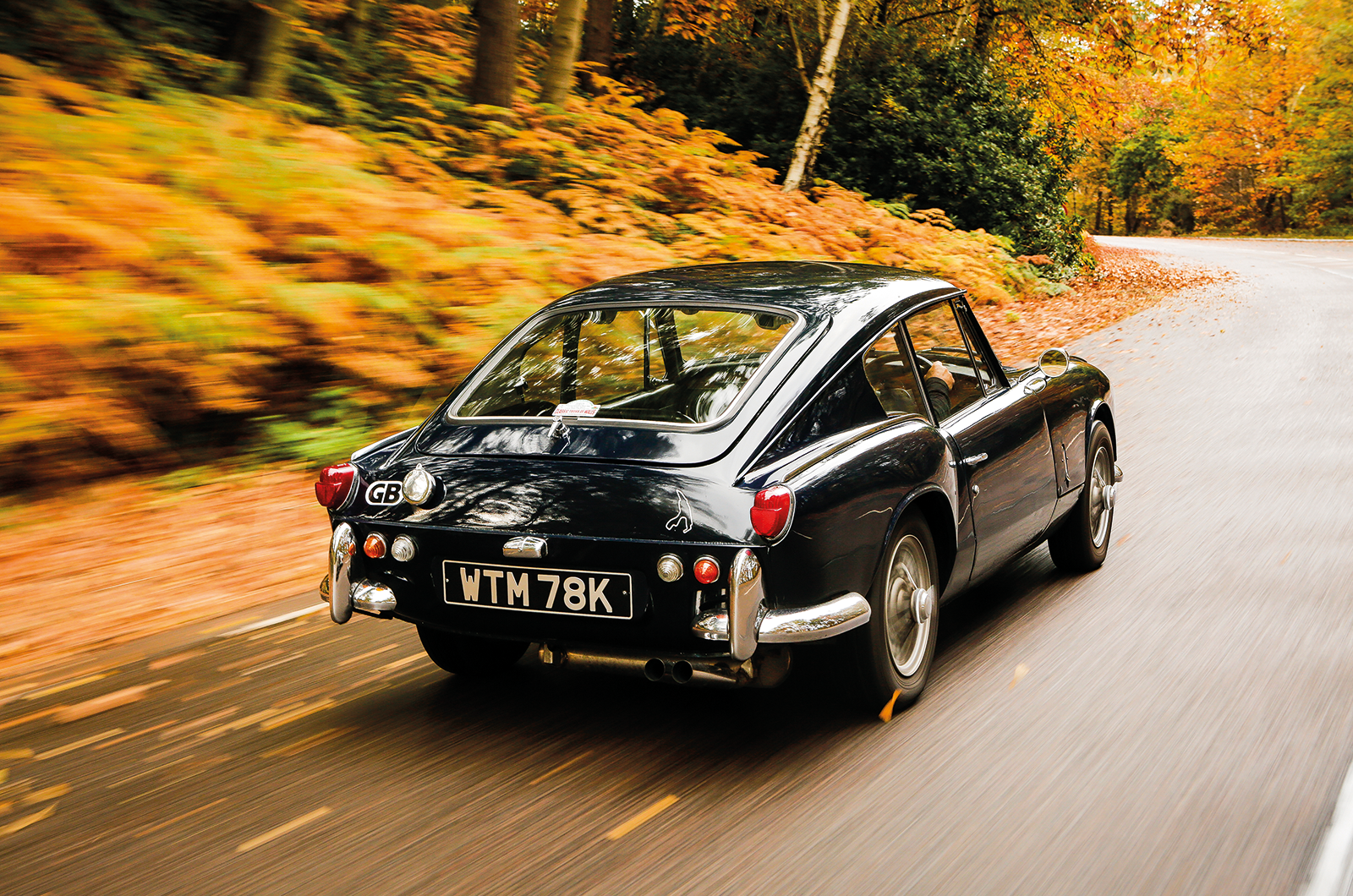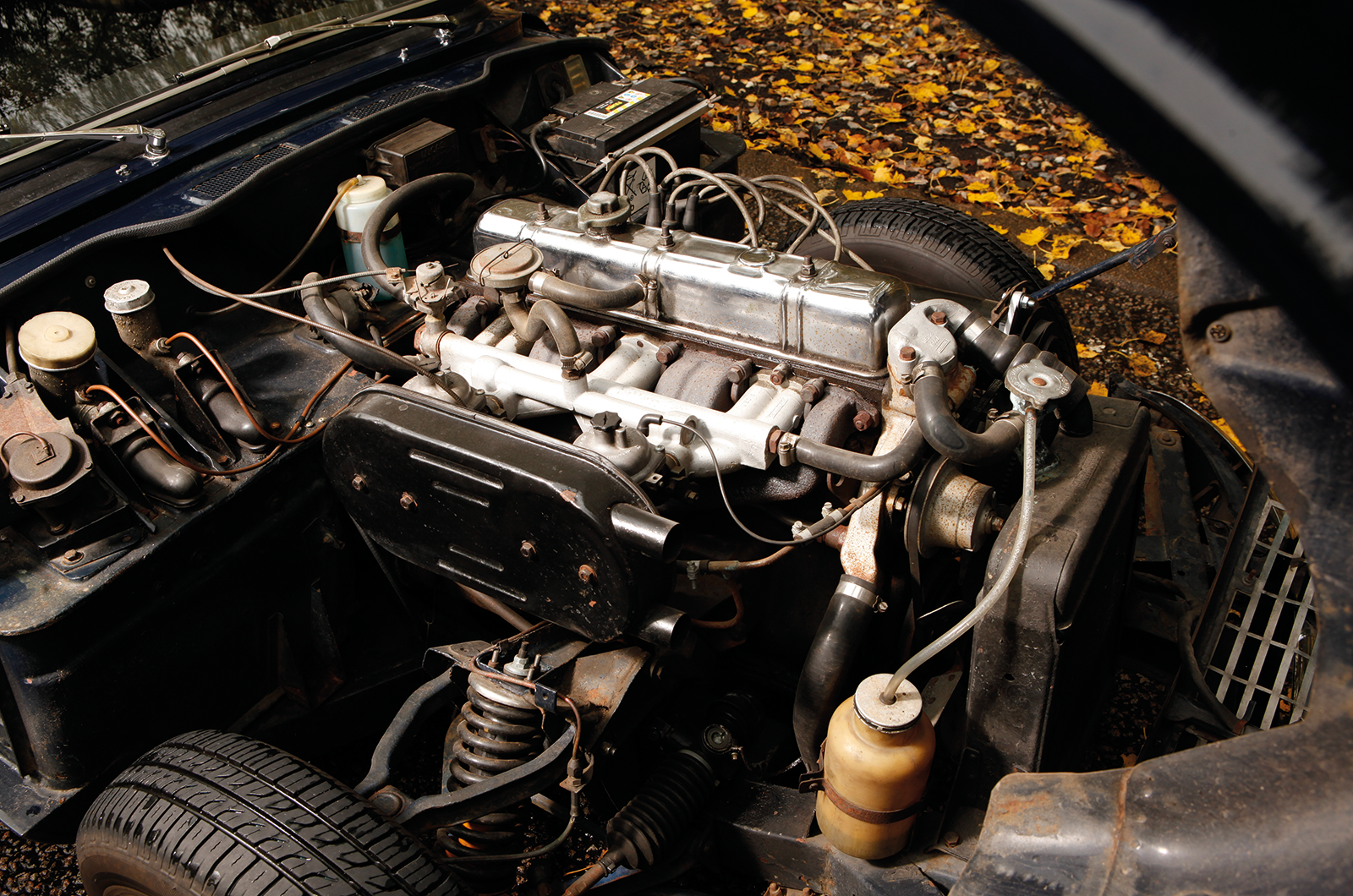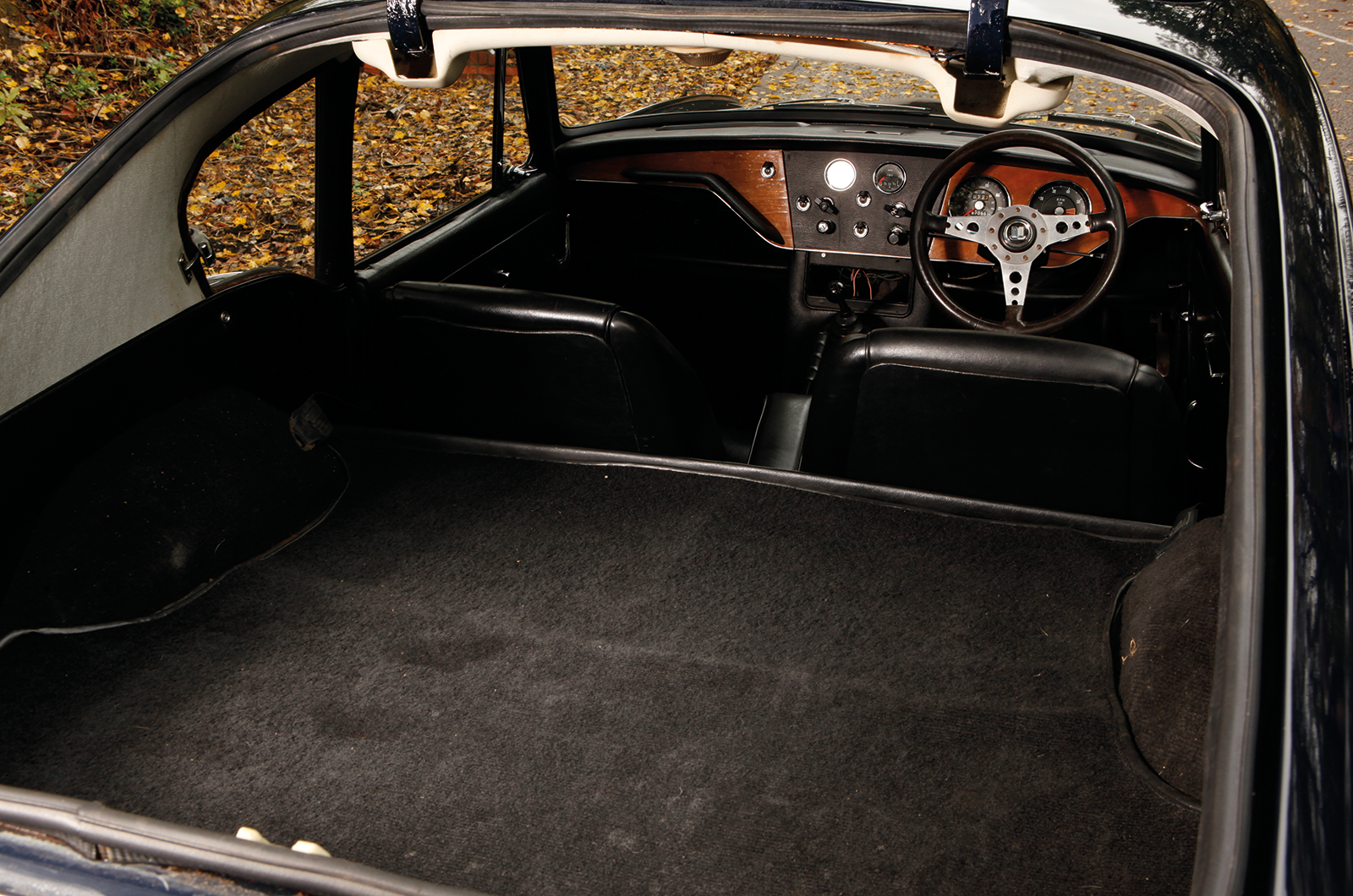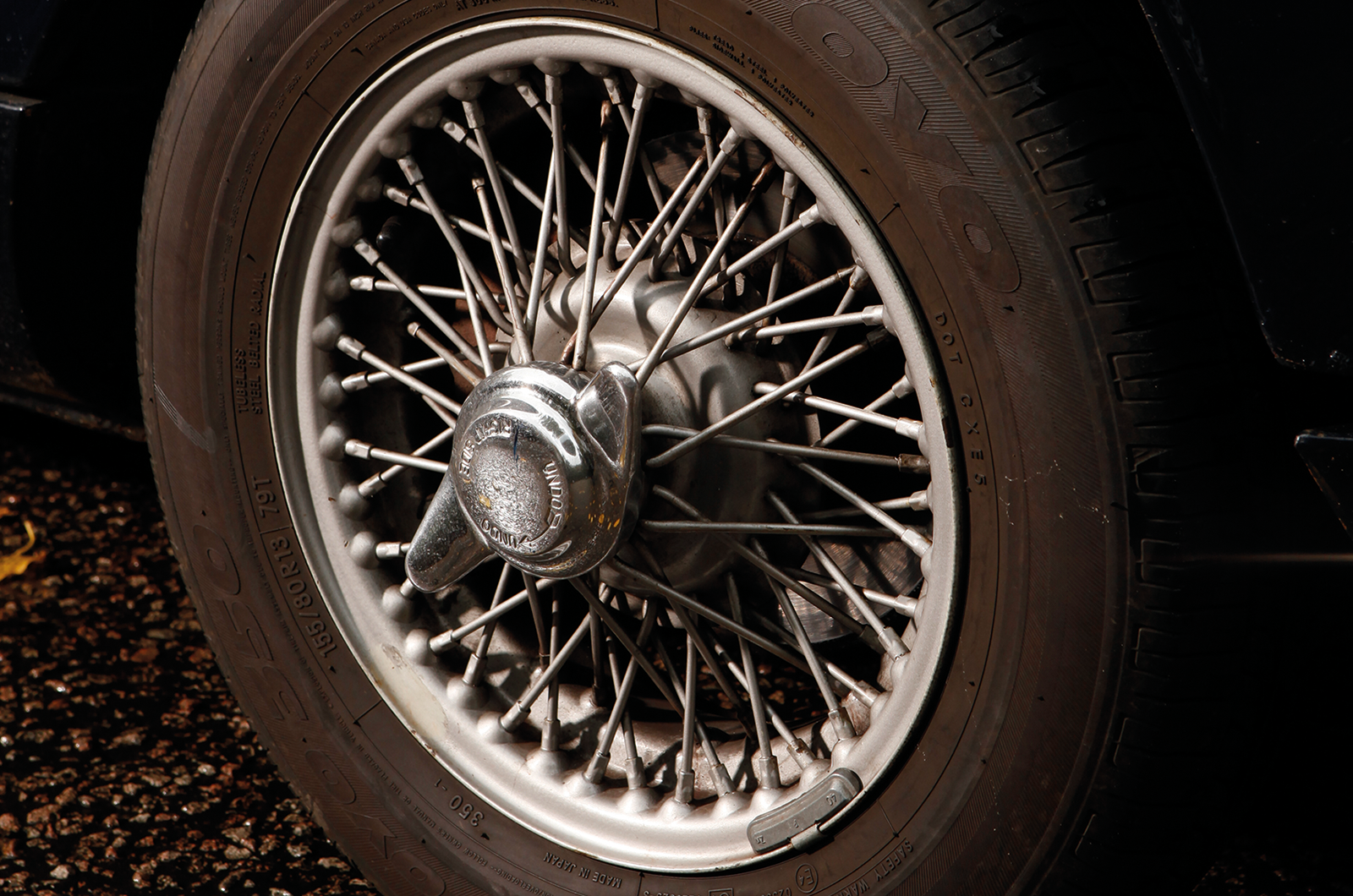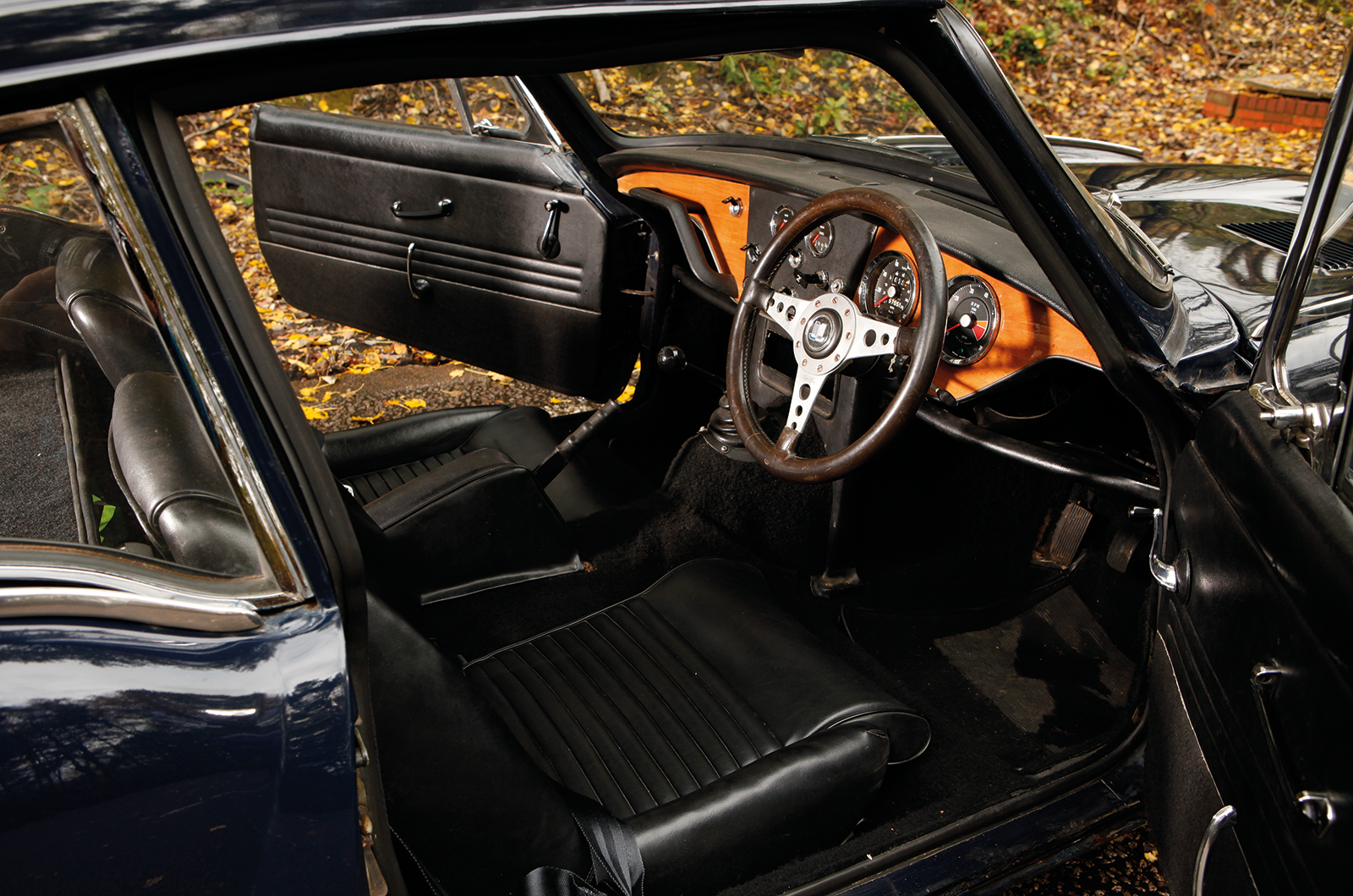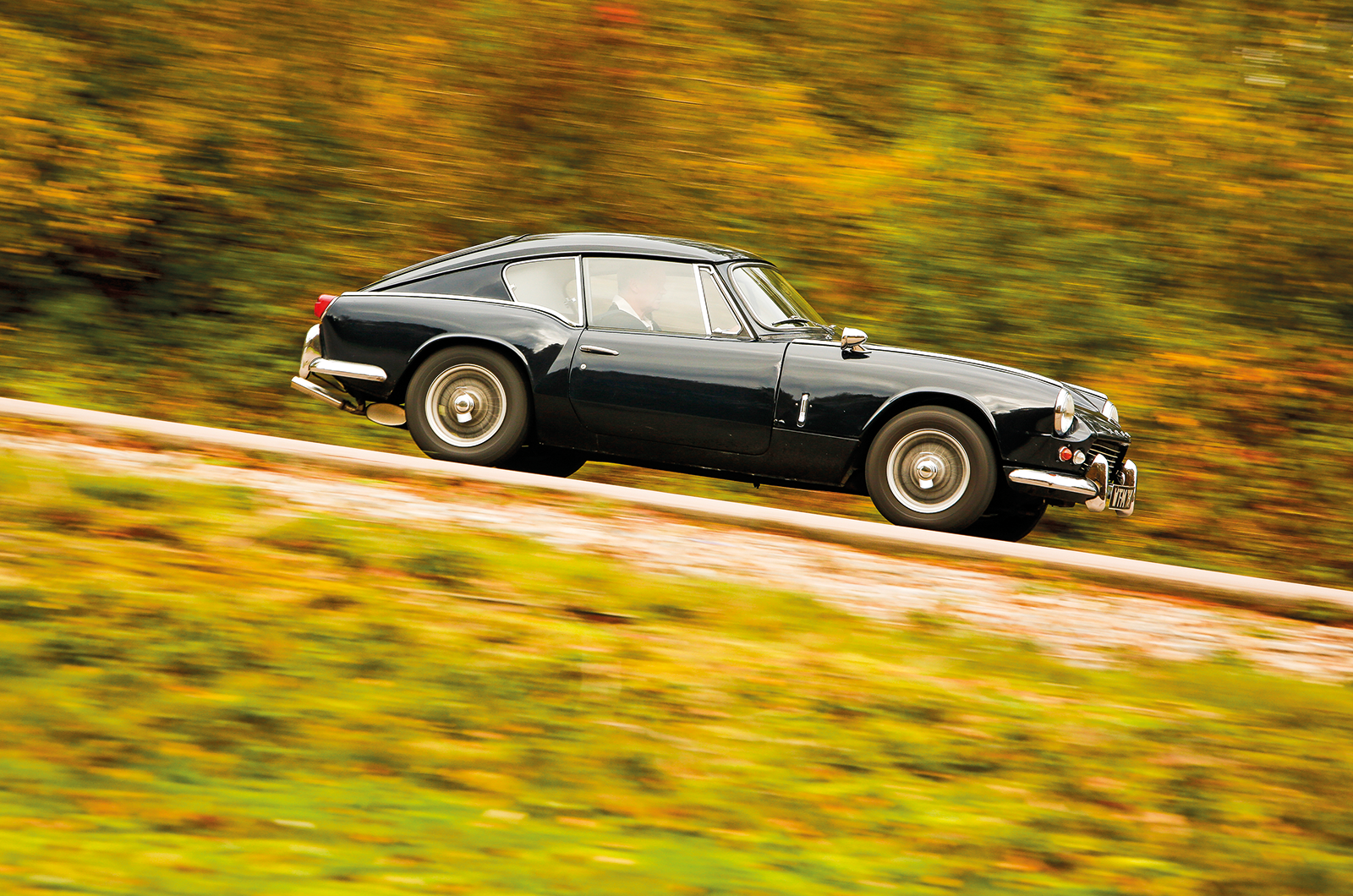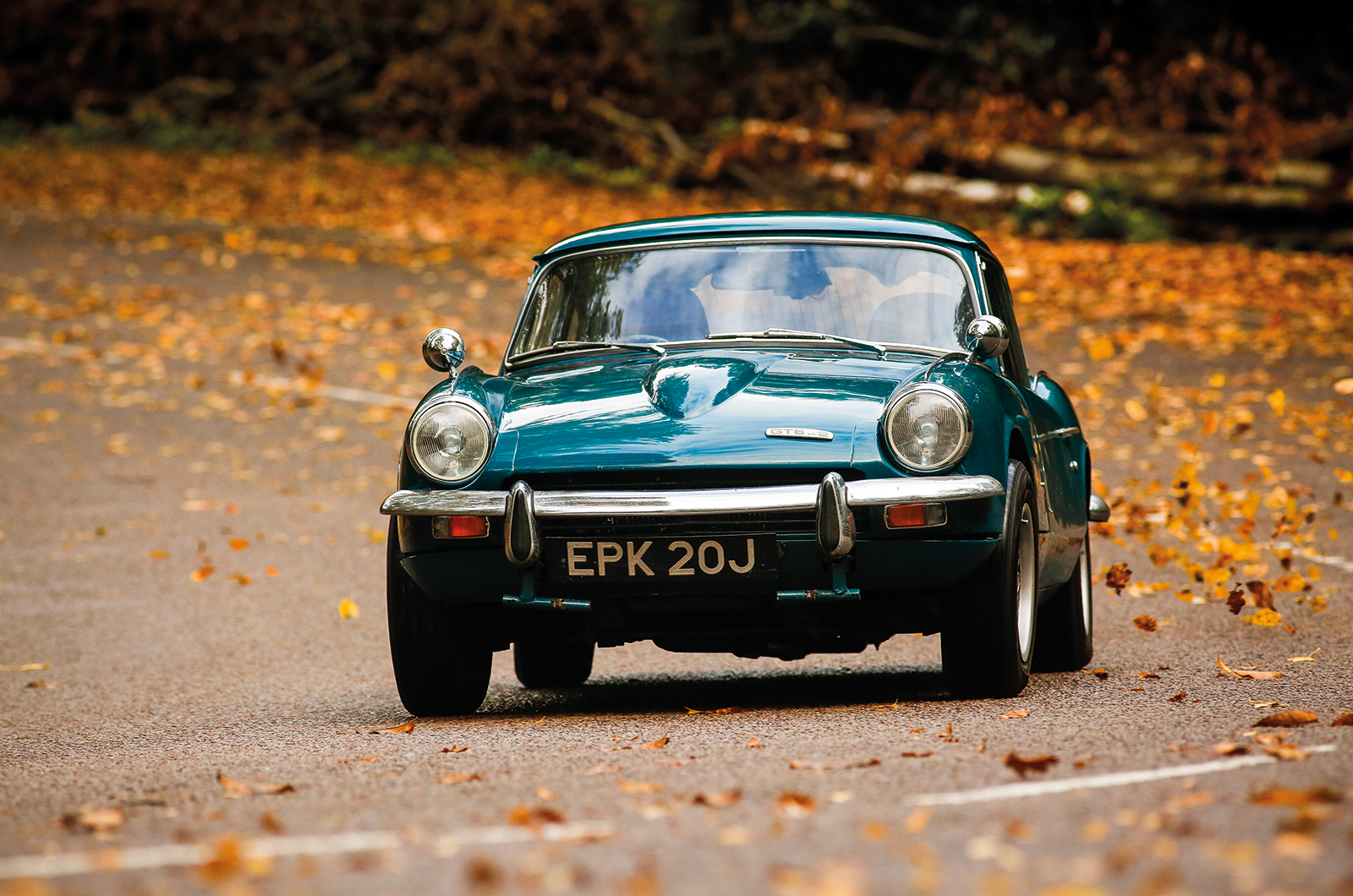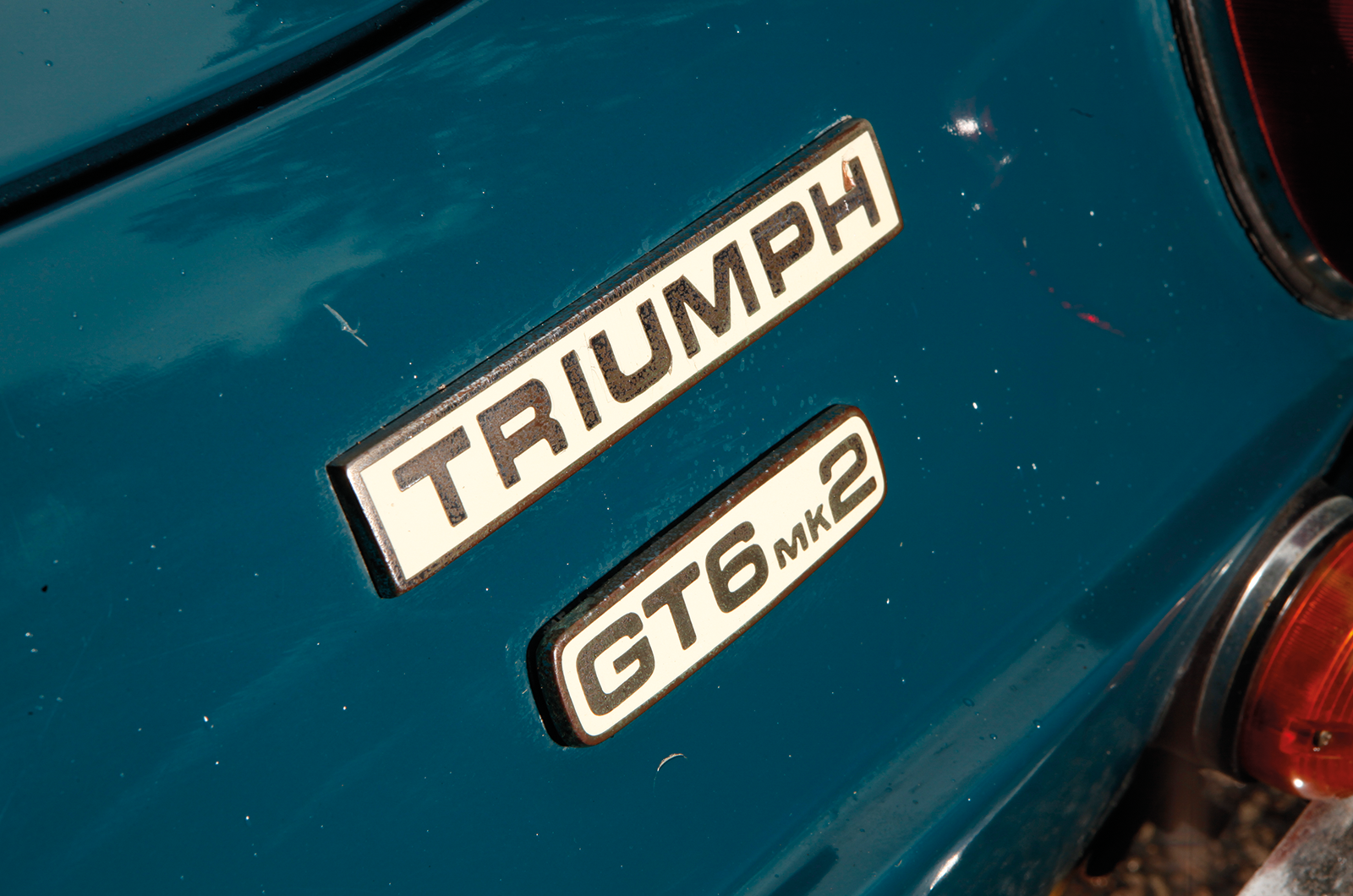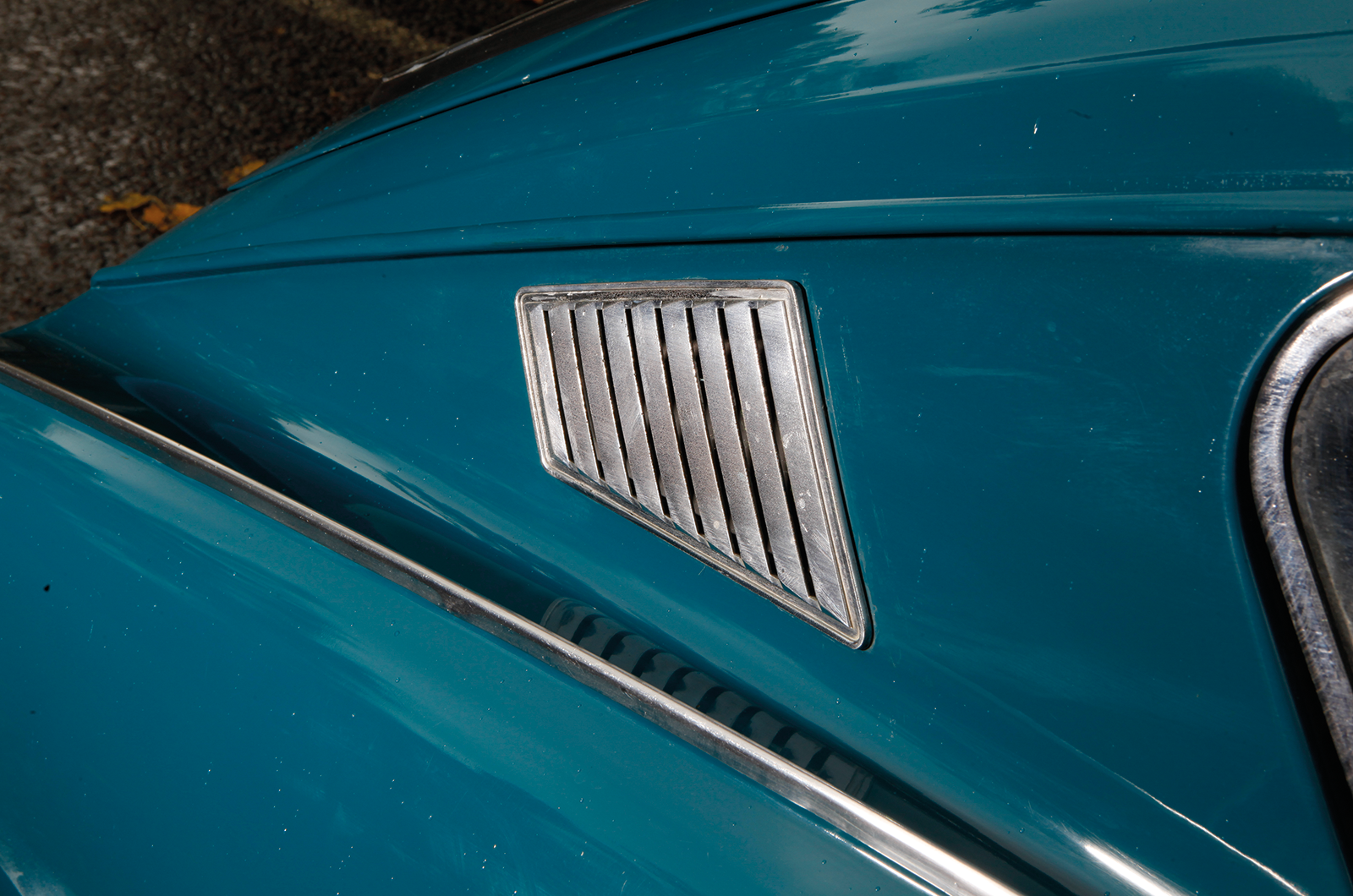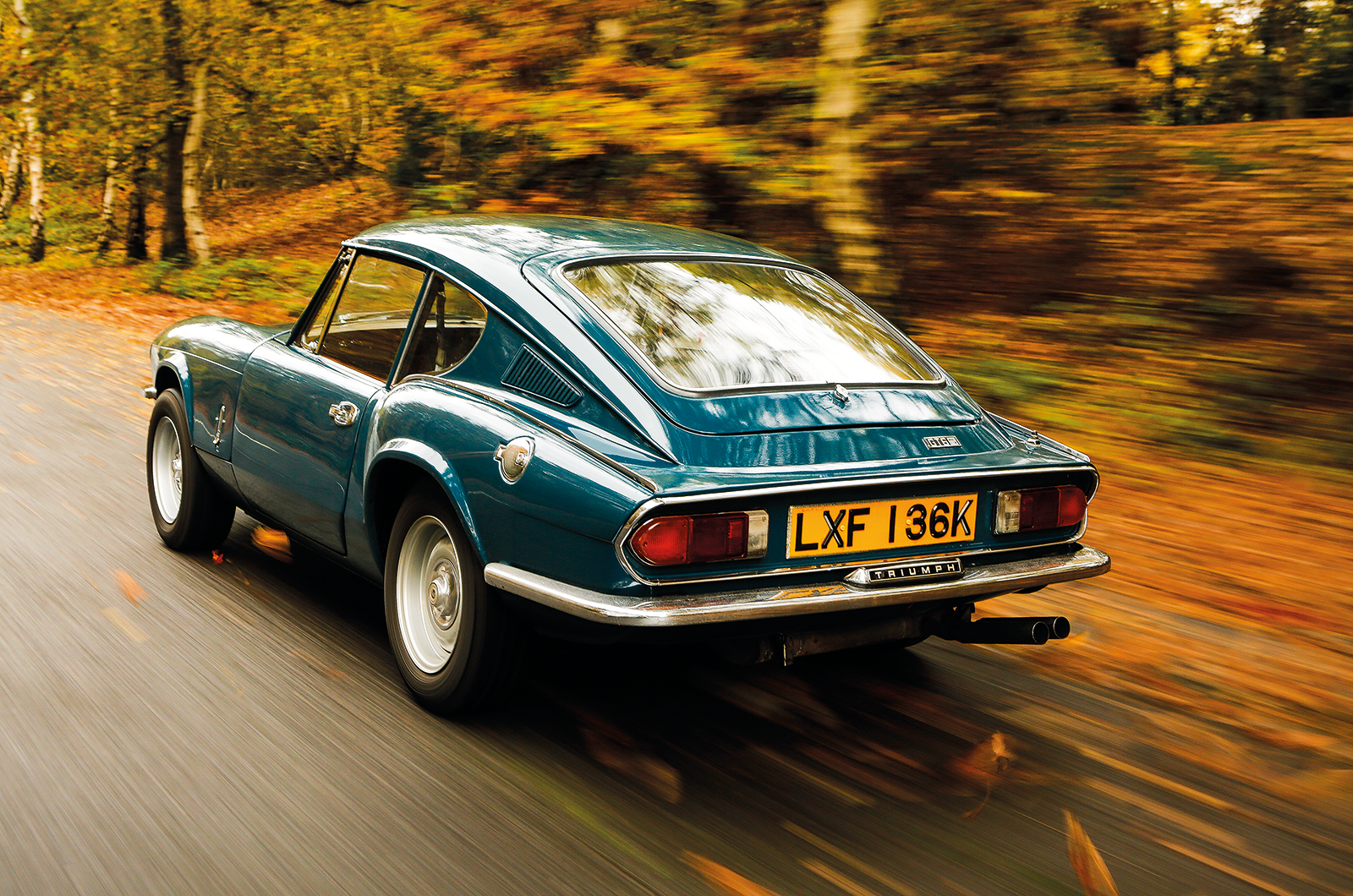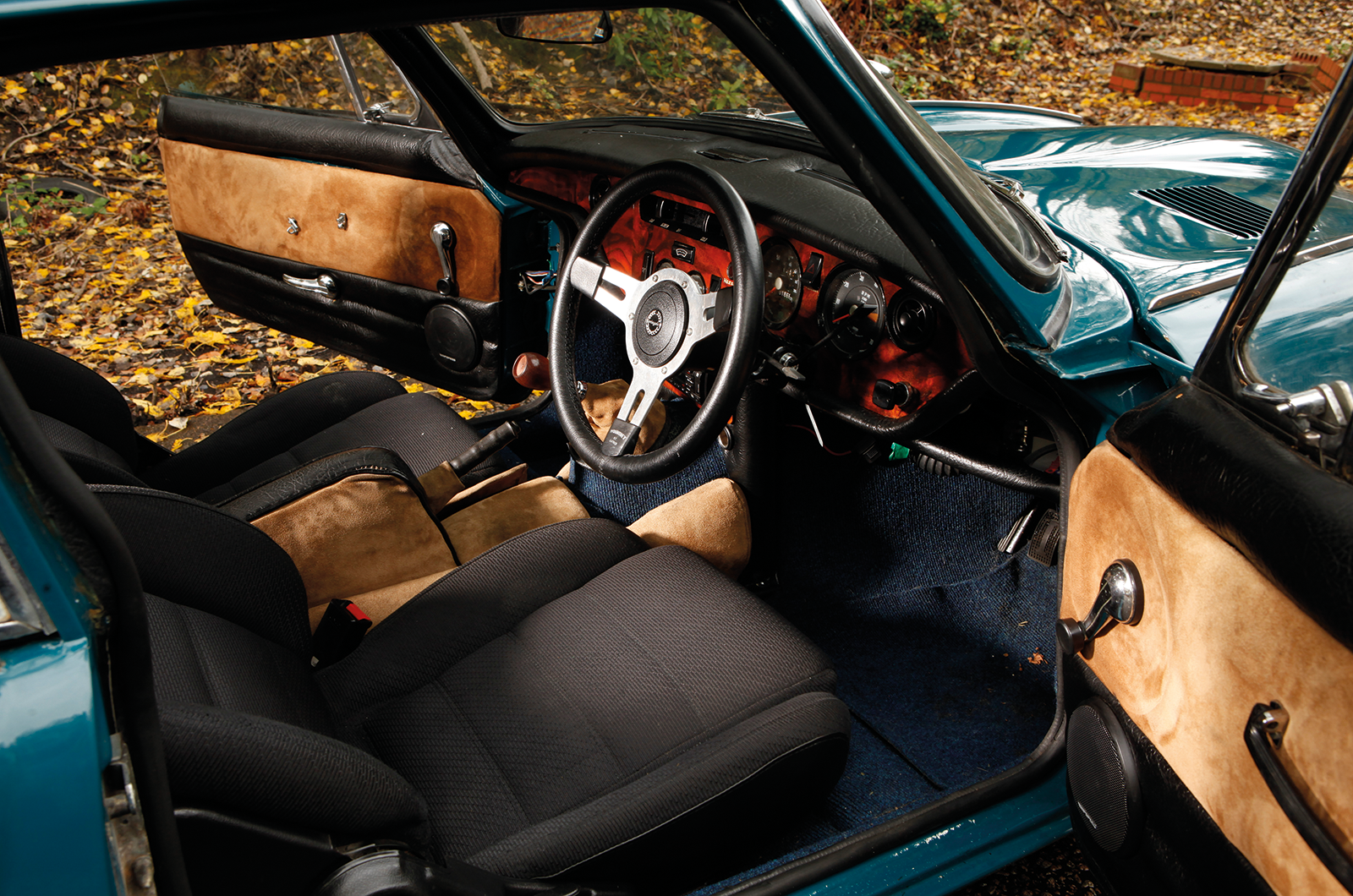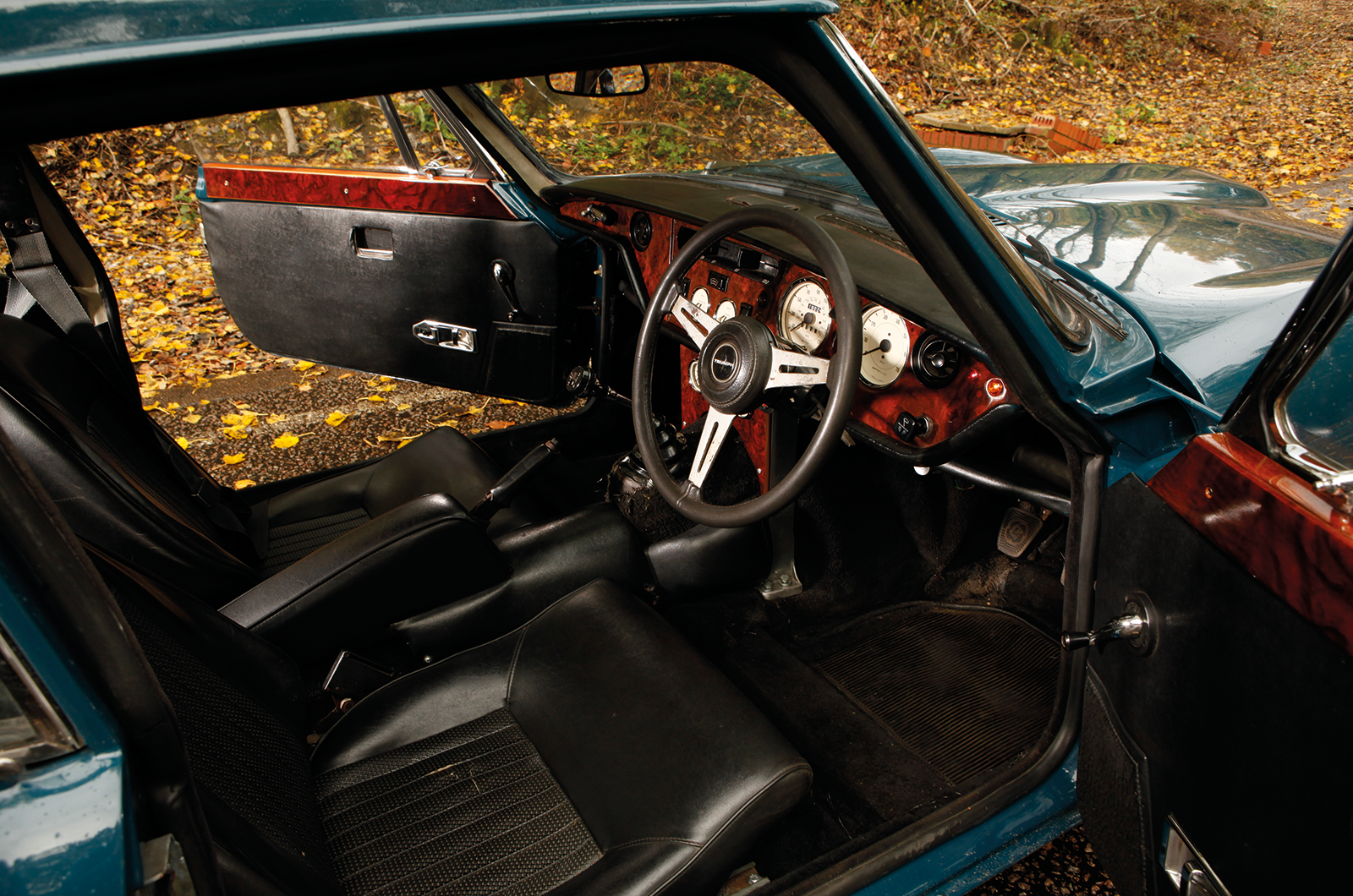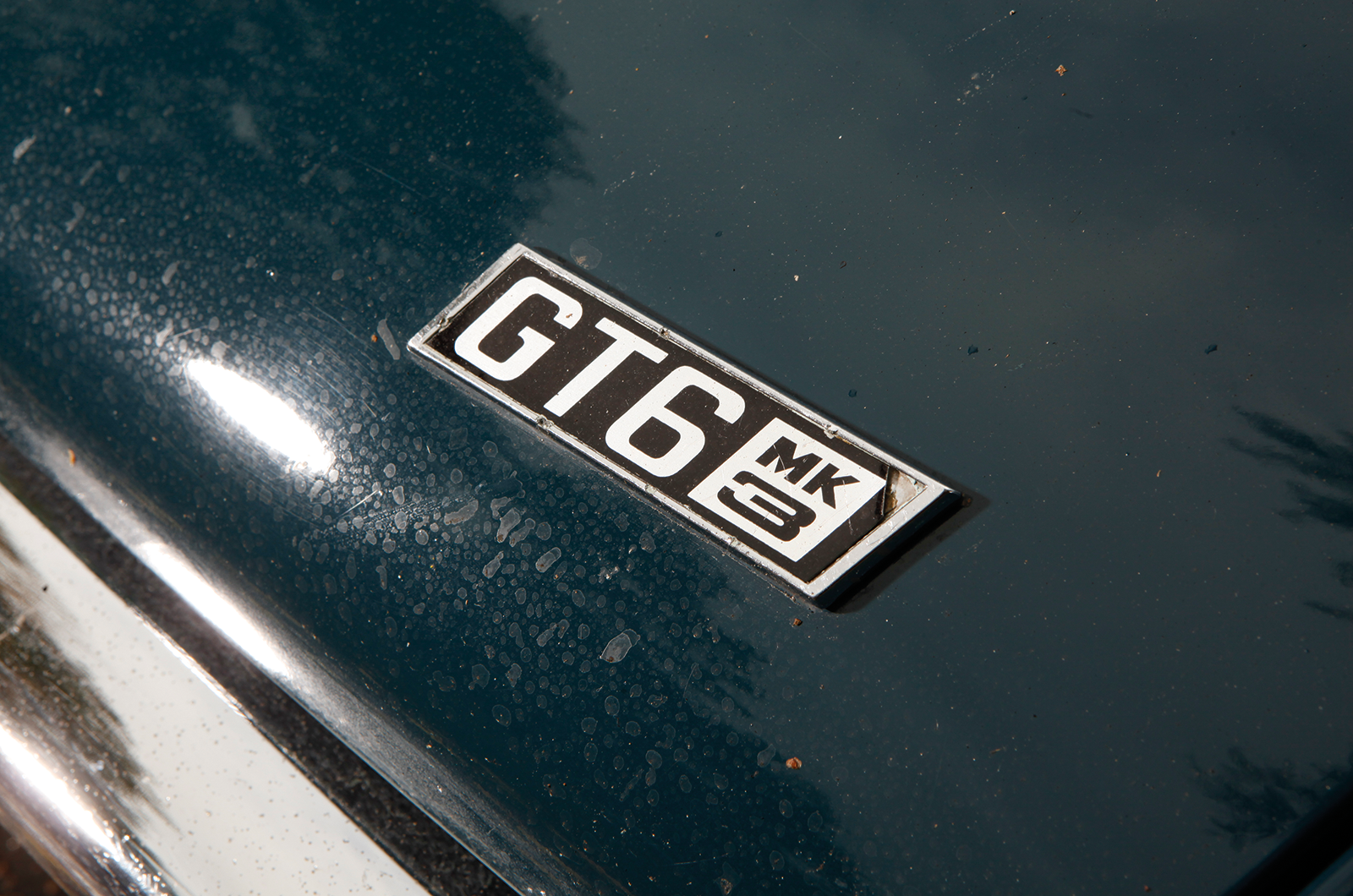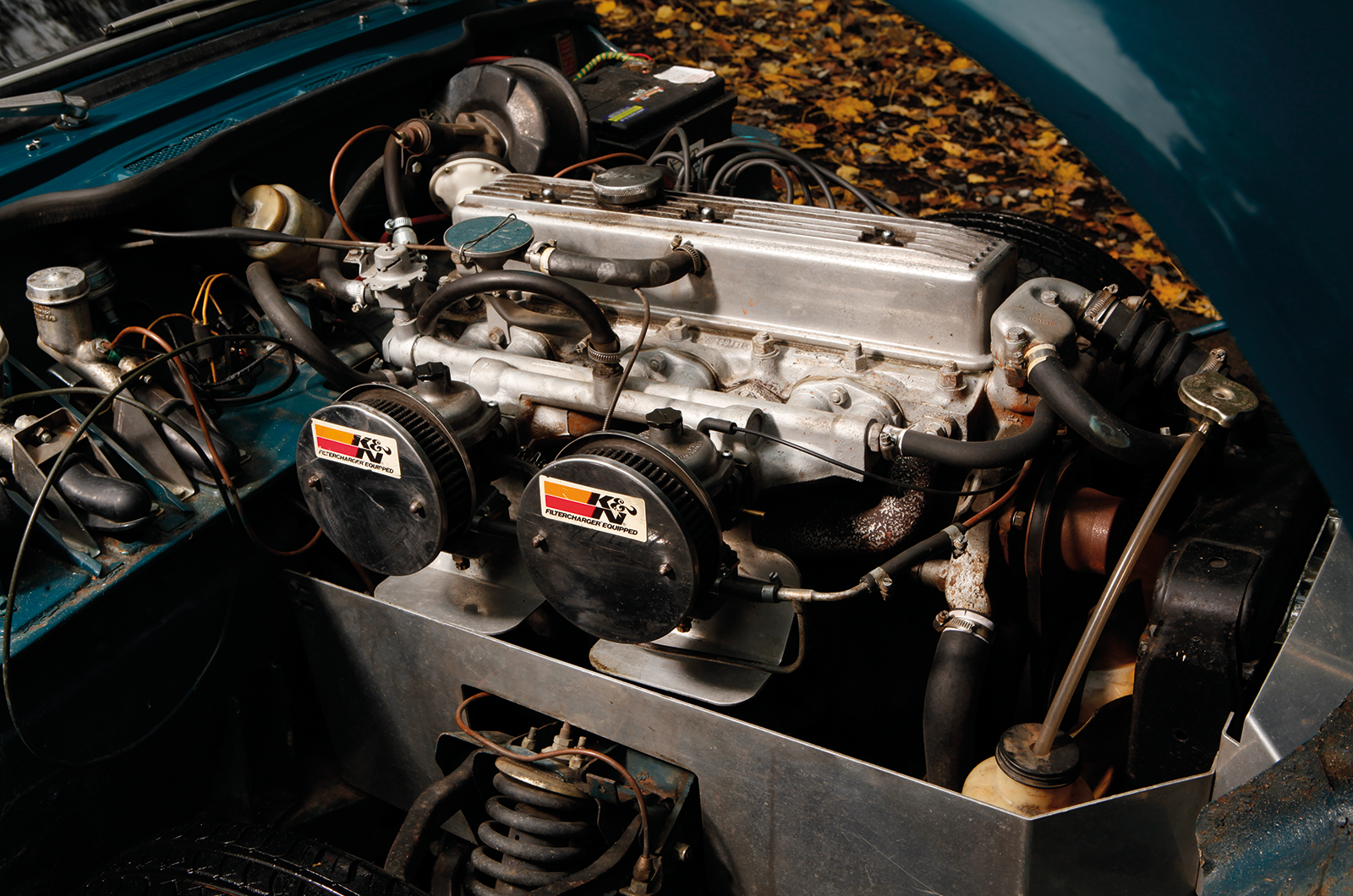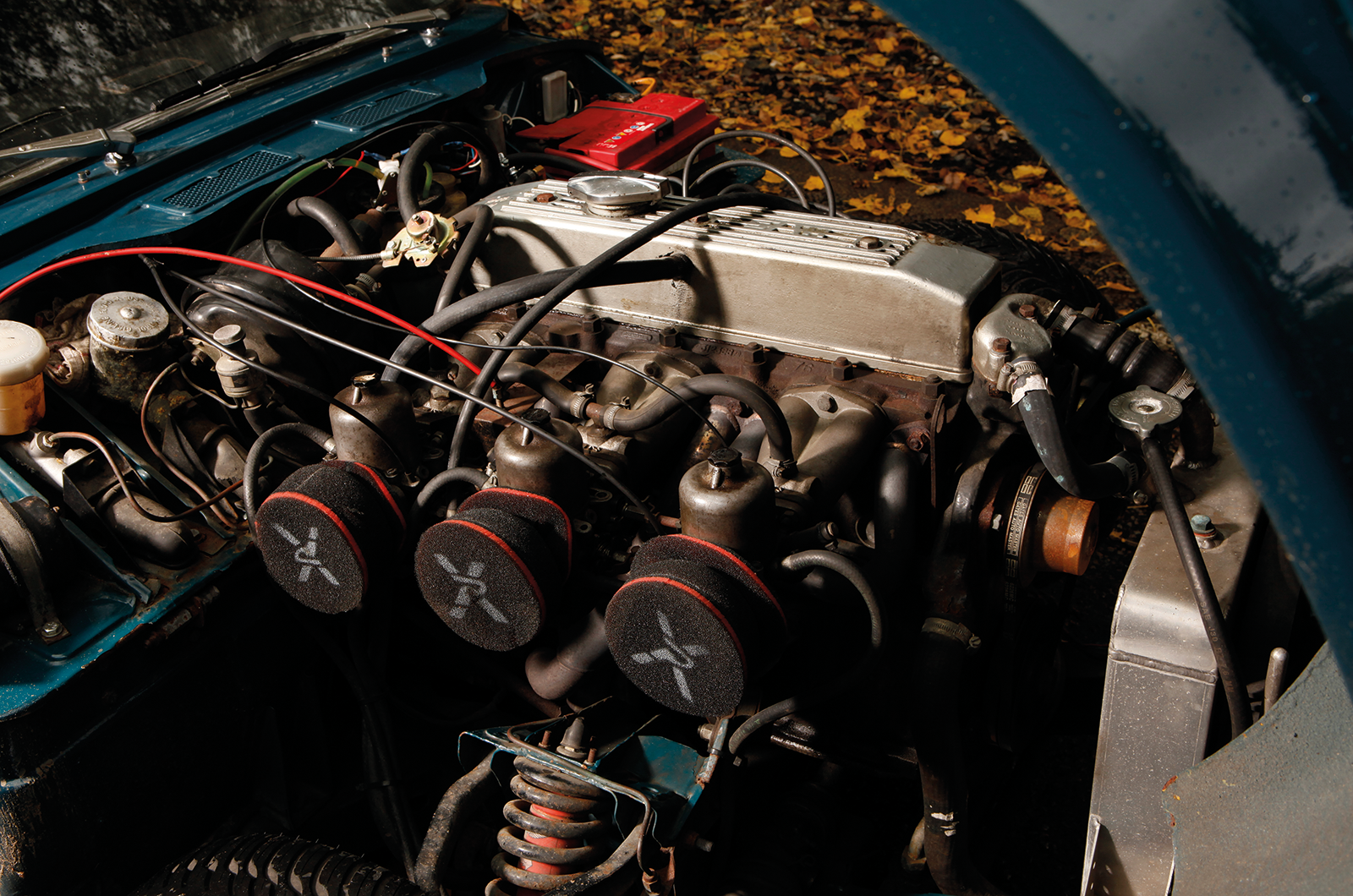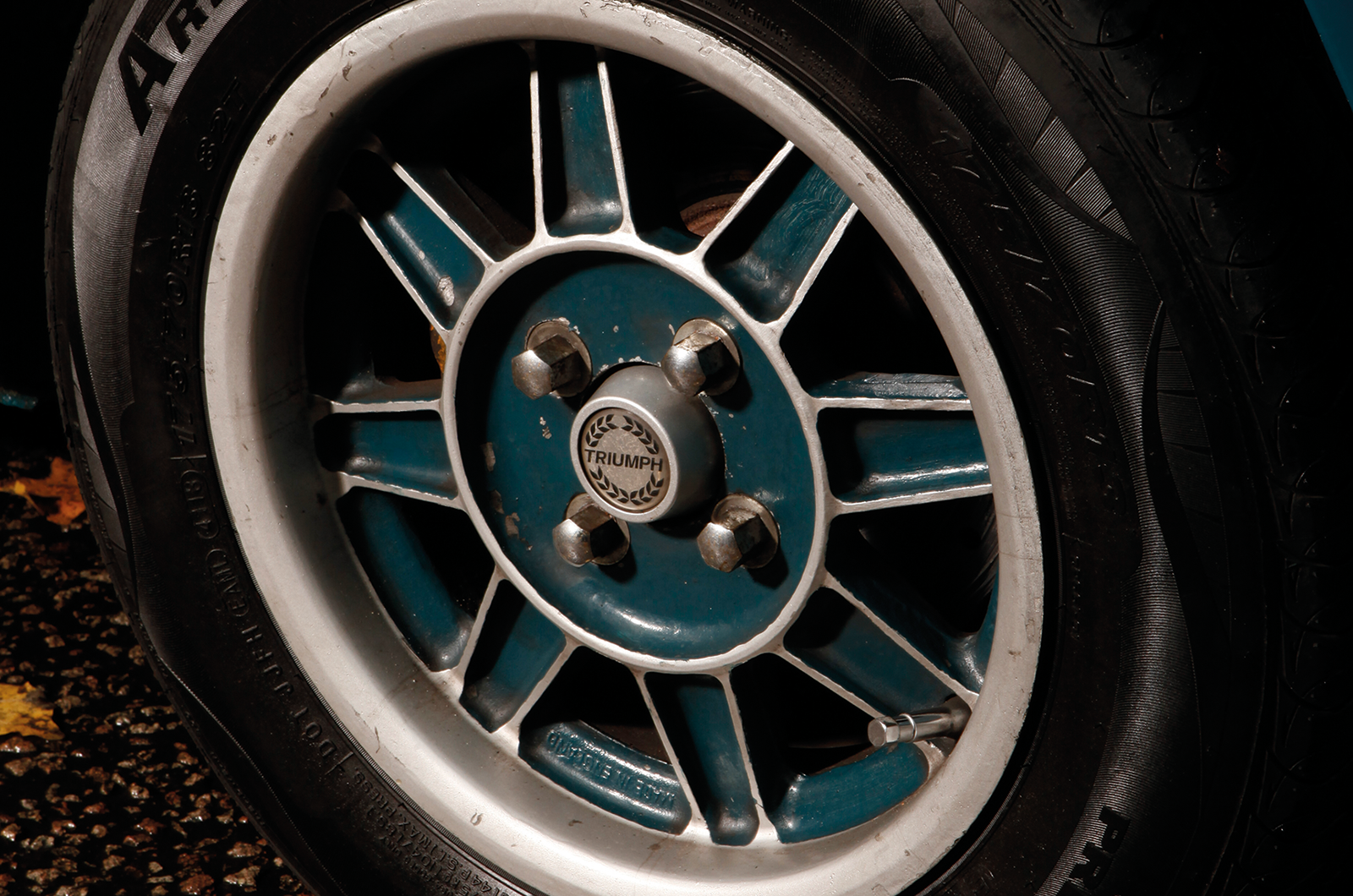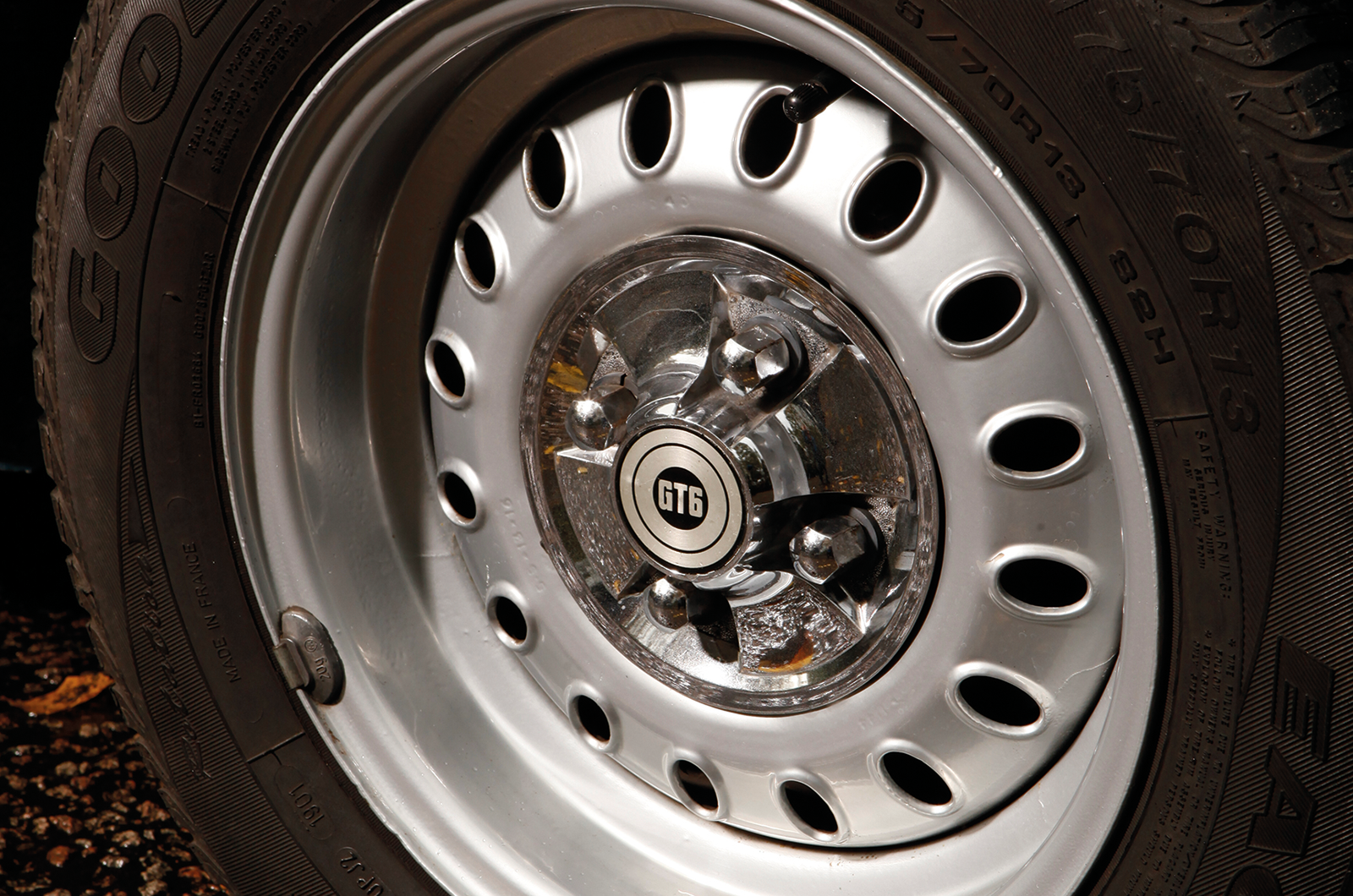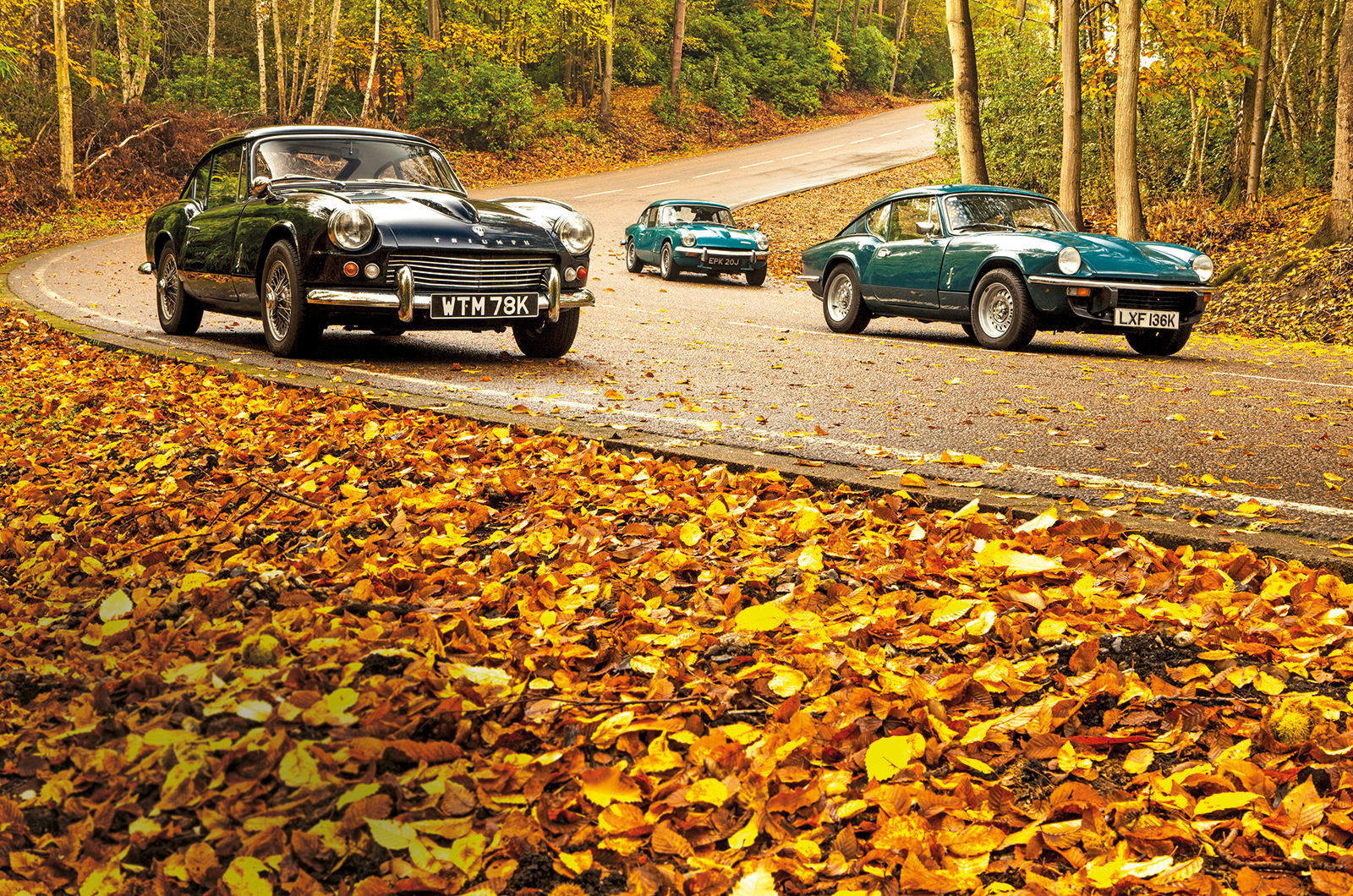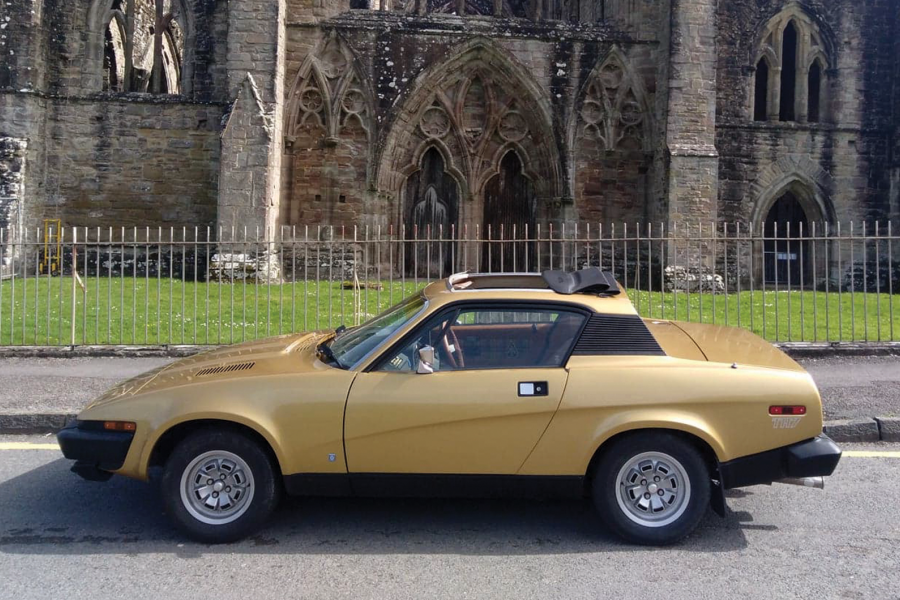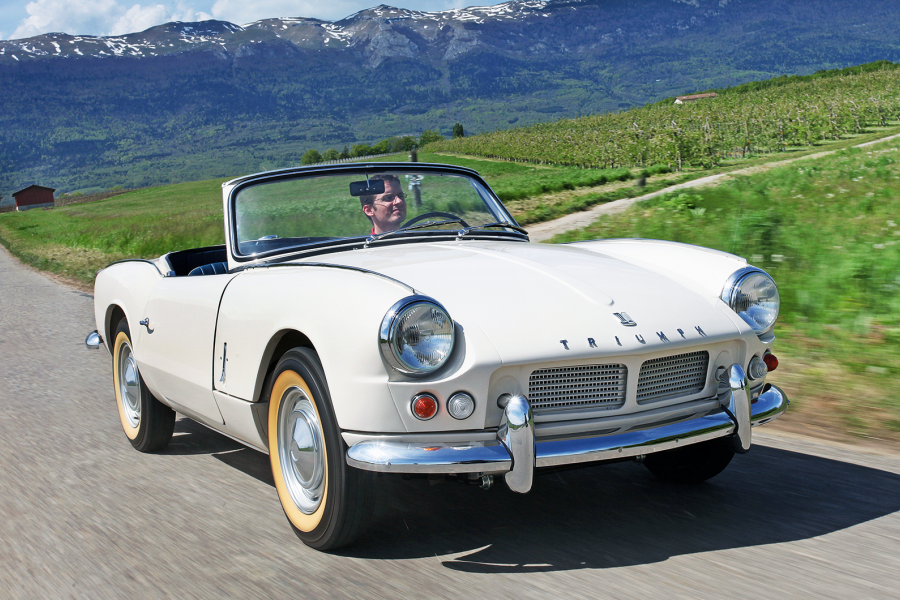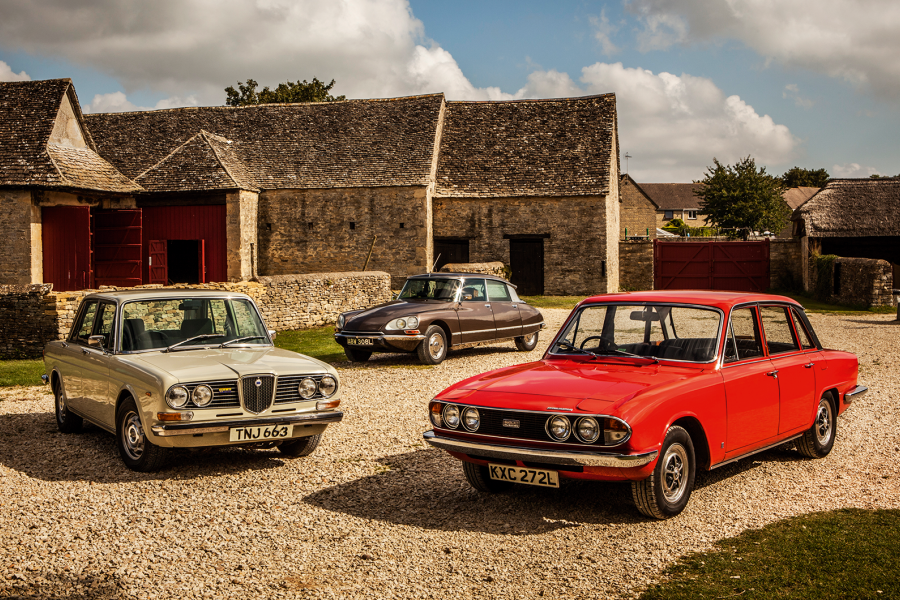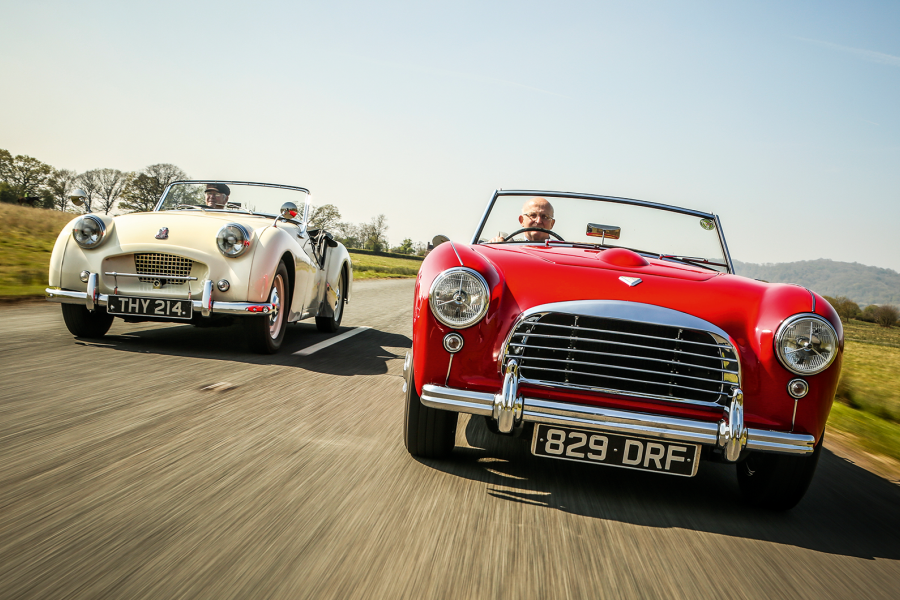The gearbox feels pleasingly mechanical and the steering is nicely weighted.
A wet, tree-lined road is not the ideal place in which to explore the in extremis handling differences between the two, but Neil Fletcher – the owner of the Mk1 – explains that he’s taken part in track days and covered countless road miles without being dispatched into the scenery.
As with many cars that have a similarly lairy reputation, it would appear that much depends on how careless the driver is.
At everyday speeds, at least, the first incarnation turns in well and doesn’t feel as if it’s going to swap ends.
The Mk3 was the last of the line
‘Our’ Mk3 is a slightly different proposition.
In period, the GT6 was ripe for modification, with SAH TriumphTune, for example, offering five stages that could give anything from 120bhp (hot camshaft, reworked head, six-branch manifold, upgraded carbs) upwards. You could even fit Tecalemit fuel injection or triple Webers.
The trend continues today, the fitment of Triumph’s 2.5-litre engine being a very popular conversion.
Andy Carr has done just that, and the transformation is remarkable. Whereas the standard cars are smooth and relatively discreet, this Mk3 is gruff and forceful.
It has loads of grunt, as you would expect, and feels beautifully sorted.
You do wonder whether Canley missed a trick by never giving the car this unit but, as Carr points out, not doing so kept the GT6 away from the TR range in performance terms.
The Mk2 (left) received a 9bhp boost; the TR6 engine is a relatively common conversion and transforms the car
Also, the various other mods required to prevent the increased power overcoming the chassis’ shortcomings would no doubt have made it financially unviable on such a low-volume model.
And besides, the standard car is plenty good enough to inspire a loyal following 50 years after it was first introduced.
It’s easy to live with, the spares market being strong enough that you could almost build a brand-new one.
Easy to work on, too, with that clamshell front end swinging right out of the way, enabling you to get to the engine while sitting comfortably on a front wheel.
Such practicalities are a bonus rather than the be-all and end-all, though.
The fact remains that the simple mix-and-match premise of this car is one that carries an enduring appeal: take basic off-the-shelf components, add a powerful engine that makes all the right noises, and garnish with an attractive, flowing body.
This Mk2 (left) wears 175/70 R13 tyres on Cosmic alloys; wider 5.5in steel wheels on this Mk3
The GT6 still offers something a little bit different, too – an individual choice from one of the most mainstream of marques.
That’s not something you could say about the otherwise capable and handsome MGB GT.
For the money, this is not a mix that you’re going to get elsewhere. Styling-wise, the Opel GT is up there but lacks the appeal of a six-cylinder engine, as does the less pretty but practical – and dynamically far superior – Lotus Elan +2.
Triumph came up with the GT6 during the prolific period following the launch of the Herald, in which the TR4, 2000, Vitesse and 1300 also appeared.
Having been revived by Standard less than two decades earlier, it’s strange to think that the name would once again have disappeared only 11 years after the GT6 went out of production.
Fortunately, the likes of Webster and Michelotti left us quite a legacy.
Images: Tony Baker
Thanks to Southern Triumph Services
This feature was first in our March 2016 magazine; all information was correct at the date of original publication
Factfile
Triumph GT6 Mk1
- Sold/number built 1966-’68/15,818
- Construction steel chassis and body panels
- Engine iron-block, alloy-head, ohv 1998cc ‘six’, twin Zenith-Stromberg carbs
- Max power 95bhp @ 5000rpm
- Max torque 117lb ft @ 3000rpm
- Transmission four-speed manual with optional overdrive, driving rear wheels
- Suspension independent, at front by wishbones, coil springs rear transverse leaf spring, swing axles, radius arms; telescopic dampers f/r
- Steering rack and pinion
- Brakes discs/drums
- Length 12ft 1in (3683mm)
- Width 4ft 9in (1448mm)
- Height 3ft 11in (1194mm)
- Weight 1904lb (863kg)
- 0-60mph 10.5 secs
- Top speed 107mph
- Mpg 26
- Price new £985
Mk2 (where different)
- Sold/number built 1968-’70/12,066
- Max power 104bhp
- Suspension rear reverse lower wishbones, Rotoflex couplings
- Price new £1148
Mk3 (where different from above)
- Sold/number built 1970-’73/13,042
- Suspension rear (from Feb 1973) ‘swing spring’ transverse leaf spring and swing axles
- Length 12ft 5in (3785mm)
- Width 4ft 10½in (1486mm)
- Weight 1936lb (878kg)
- 0-60mph 10.1 secs
- Top speed 112mph
- Mpg 28
- Price new £1287
READ MORE
Baby classic sports cars do battle: Honda S800 vs Fiat Sport Spider vs MG Midget
Buyer’s guide: Triumph Spitfire
Triumph Spitfire vs MGB vs Lotus Elan: a new dawn
James Page
James Page is a regular contributor to – and former Editor of – Classic & Sports Car
